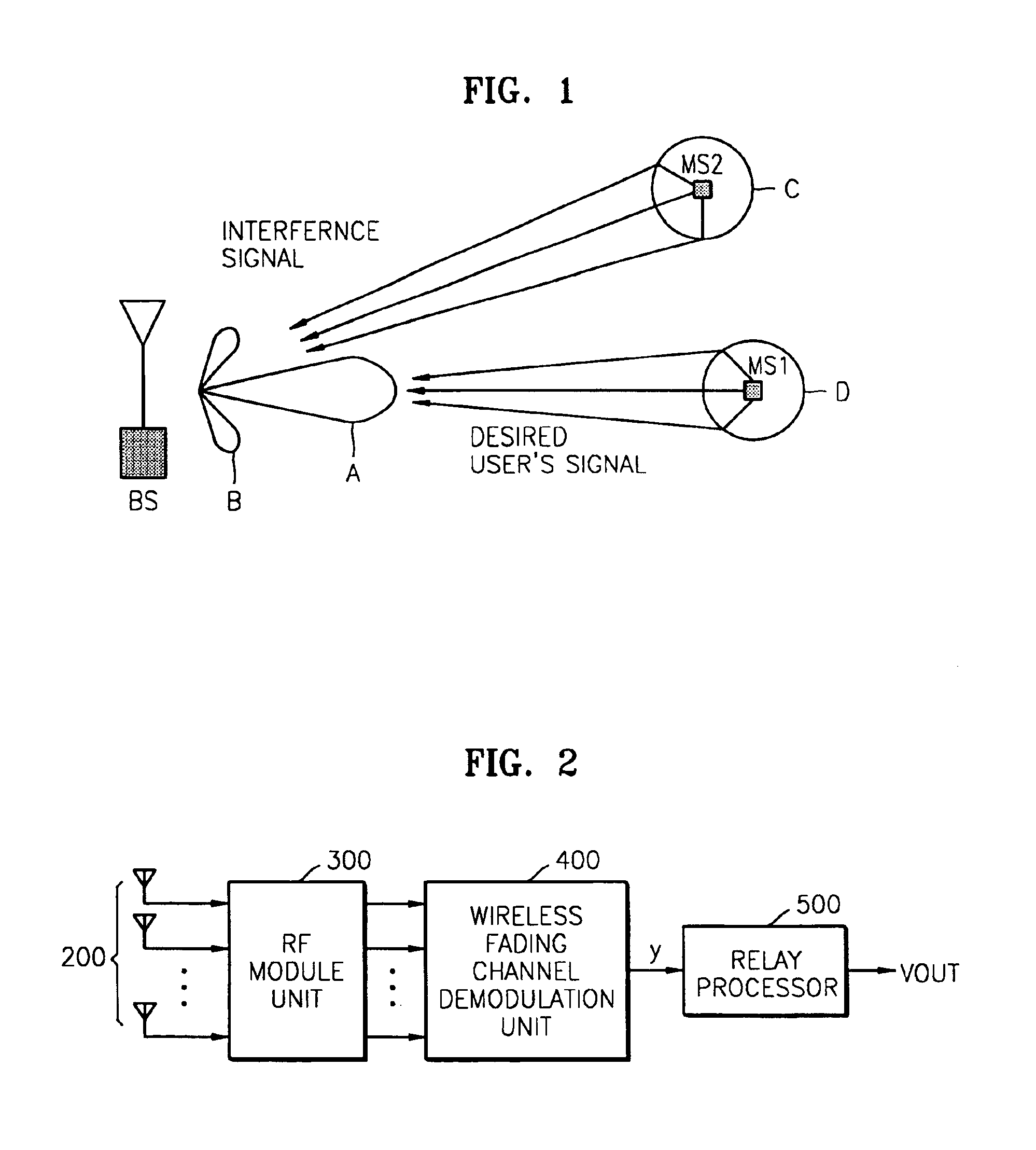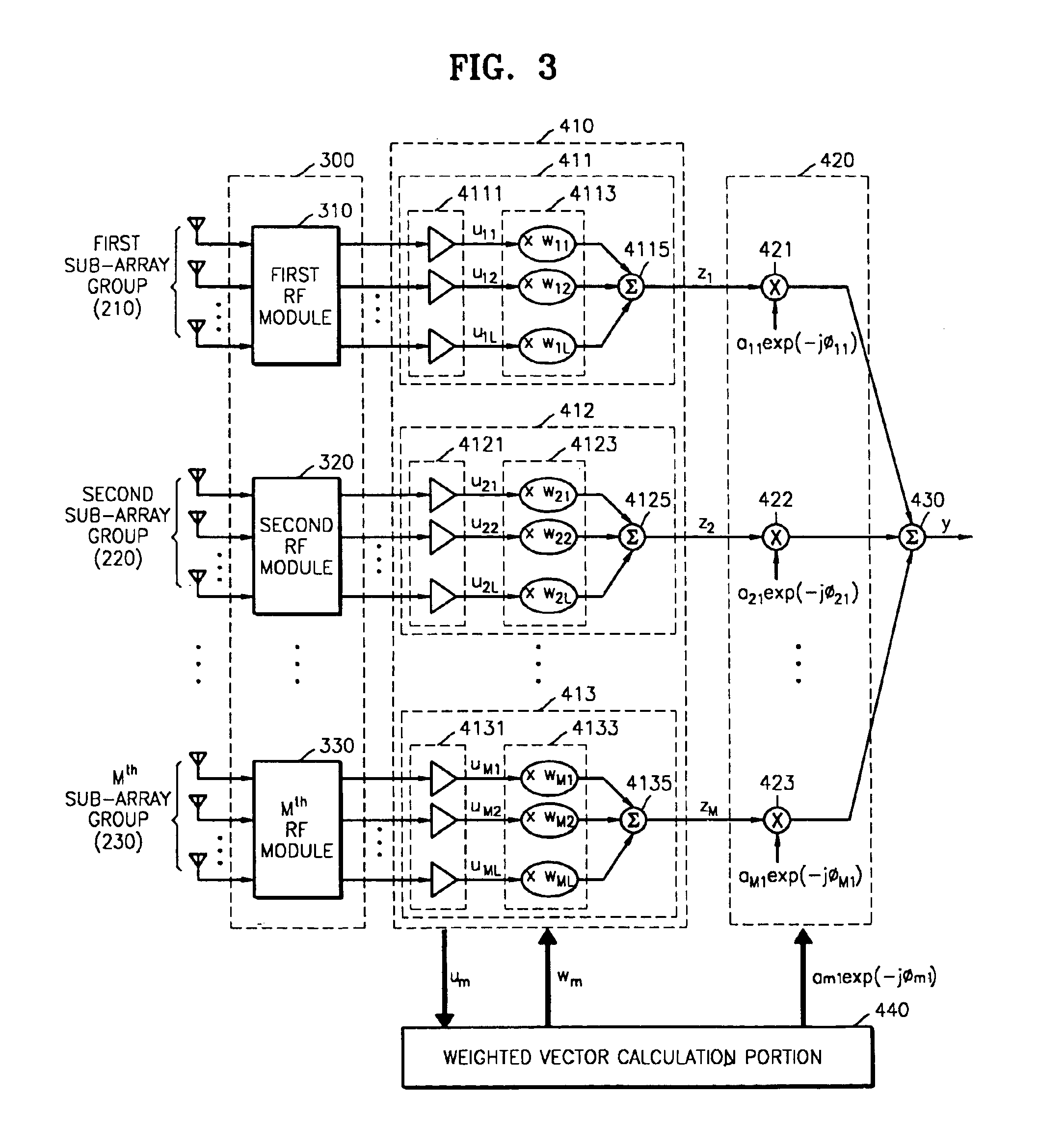Combined beamforming-diversity wireless fading channel demodulator using adaptive sub-array group antennas, signal receiving system and method for mobile communications
a technology of fading channel demodulator and sub-array group antenna, which is applied in direction finders using radio waves, instruments, polarisation/directional diversity, etc., can solve the problem of reducing the fading effect using only the adaptive antenna array, as in this case, and the fading effect causing sharp signal fluctuations within a short time cannot be overcome, and achieves high signal and interference-to-noise ratio (sinr).
- Summary
- Abstract
- Description
- Claims
- Application Information
AI Technical Summary
Benefits of technology
Problems solved by technology
Method used
Image
Examples
Embodiment Construction
The preferred embodiments of the present invention will be described with reference to the appended drawings. Identical reference numerals have been used, where possible, to designate identical elements that are common to the drawings. The numerical terms “M”, “L” and “N” used hereinbelow (e.g., “Mth”) refer to positive integers. The terms “wireless fading channel demodulator” and “wireless fading channel demodulation unit” used throughout the specification are used interchangeably to describe an apparatus for demodulating a signal transmitted over a wireless fading channel.
Referring to FIG. 2, a signal receiving system for mobile communications according to an embodiment of the present invention includes sub-array groups 200, a radio frequency (RF) module unit 300, and a wireless fading channel demodulation unit 400. The signal receiving system for mobile communications may further include a relay processor 500 when used for a base station. Alternatively, the mobile communication s...
PUM
 Login to View More
Login to View More Abstract
Description
Claims
Application Information
 Login to View More
Login to View More - R&D
- Intellectual Property
- Life Sciences
- Materials
- Tech Scout
- Unparalleled Data Quality
- Higher Quality Content
- 60% Fewer Hallucinations
Browse by: Latest US Patents, China's latest patents, Technical Efficacy Thesaurus, Application Domain, Technology Topic, Popular Technical Reports.
© 2025 PatSnap. All rights reserved.Legal|Privacy policy|Modern Slavery Act Transparency Statement|Sitemap|About US| Contact US: help@patsnap.com



